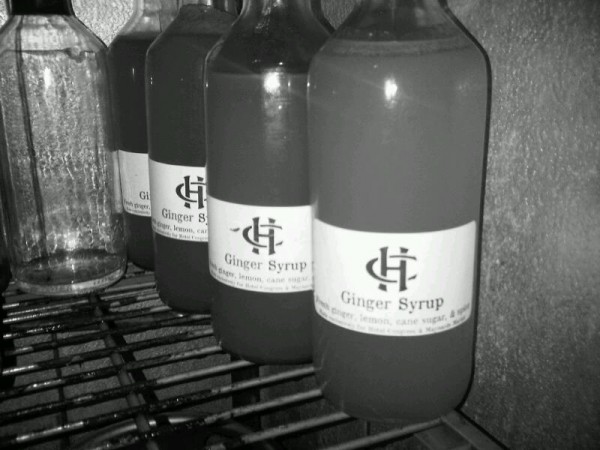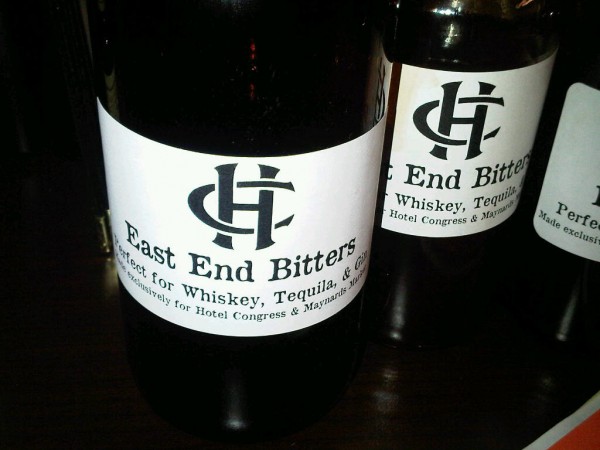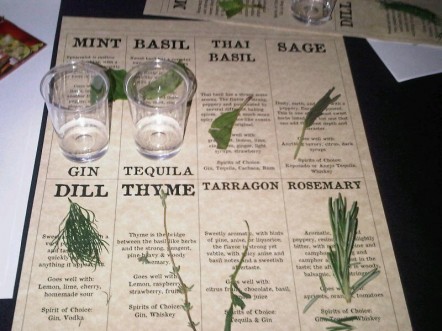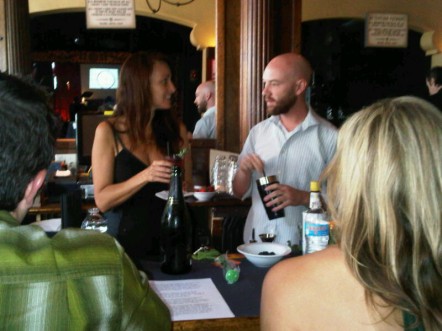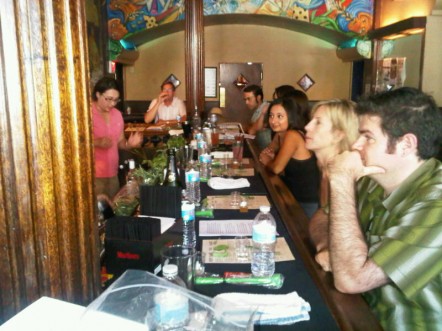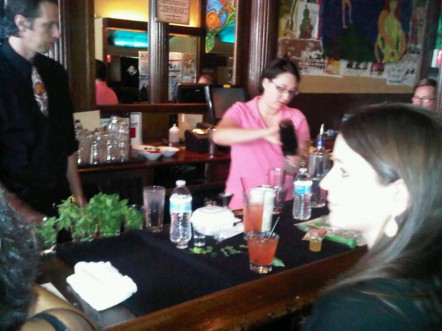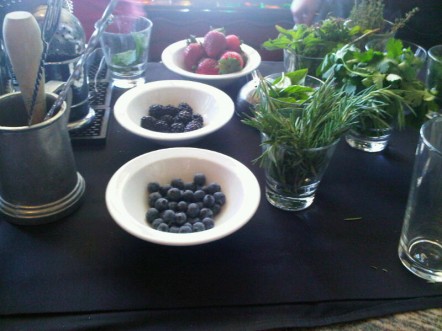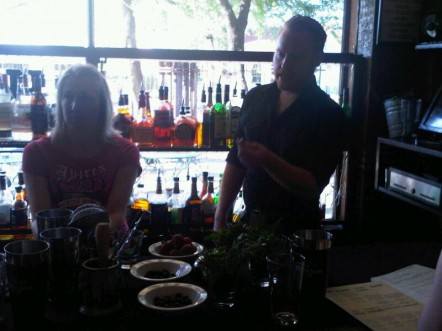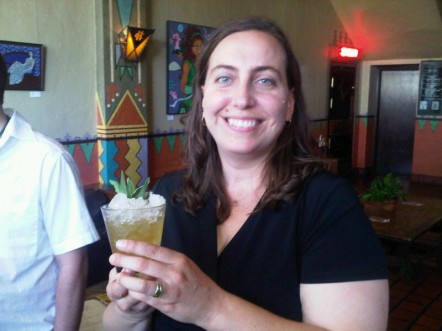
Tequila: A Love Story
An exploration of the emotional ties that we forge between the spirits we love and memories we share
I was in the midst of conducting a whiskey tasting a while back when one of the participants pulled me aside to share a curious fact: apparently a university study released in June of 2006 showed that 100% agave tequilas had an unusually-high methanol-to-ethyl alcohol content—a fact that took me completely by surprise.
As many experienced drinkers (and chemists) know, the distillation process can produce many different alcohol compounds—some of which can be very nasty, indeed. Methyl-alcohol, or methanol (also commonly known as wood alcohol—how ridiculous is that!) is the biggest culprit and the most detrimental to one’s well-being. The ancient Egyptians used methanol in their embalming fluid, and methanol is readily converted to formaldehyde. Other applications include aerosol propellant, ether, and fuel. This extremely toxic chemical can cause permanent blindness, and is one of the major co-conspirators in hangovers. Modern distillation seeks to eliminate methanol via appropriate temperature regulation and the discarding of the “heads” and “tales” of the distillate. So how is it that methanol, the distiller’s worst enemy, appears in larger-than-normal amounts in fifteen-dollar glasses of America’s new favorite spirit?
I would like to point out that at the time I found out about the study, it was nearly 2011—more than four years after the findings—and I still had at least fifty different labels of tequila on my shelf. Not a single distributor, supplier, bartender, brand ambassador, or anyone of above-average spirit knowledge had mentioned this development. And why should they? Tequila is a multi-billion dollar business, with over 1000 different brands flying the Tequilana Weber flag. They aren’t exactly going to publicize the fact that their product might actually be less pure than the “mixto” brands on the market, are they?
The truth is, whether or not I’d known about the potential impurities of 100% agave tequila, I’d still have drank the stuff; Heck, I’d already fallen irrevocably in love with the enigmatic spirit—despite any of the consequences. And as Francois La Rouchefocauld once wrote, “If we are to judge of love by its consequences, it more nearly resembles hatred than friendship.”
••••••••••••••••••••••••••••••••••••••••••••••••••••••••••••••••••••••••
I never had the typical “college tequila nightmare” that tarnishes so many opinions of the spirit. I didn’t drink a fifth of Jose Cuervo, vomit uncontrollably, and pass out only to find myself sleeping naked on my neighbors’ front porch. Instead, I largely avoided the spirit—albeit unintentionally—for most of my adult life; sticking instead to gin first, followed by my single malt scotch period, and then—in a weird, backwards digression—domestic beer and Jager-bombs. As a young man of 19, I had the good fortune of spending a summer (and the following summer, as well) learning to drink in the booze-soaked streets of Belfast, the peat-soaked alleys of Glasgow and Edinburgh, and the sweat-drenched underground clubs of Rome as opposed to the backyard of a college kegger. A typical college student I was not. My drinks consisted of gin and tonic (or straight, which still puzzles me to this day), scotch and soda, and pints of either Harp, Carlsberg, or—during one particularly bad stretch of time—absinthe and soda; a concoction that resulted in a series of embarrassing incidents that included losing track of three days time, missing a dinner party in my honor, sleeping on the doorstep of a random house, and getting caught by campus security at Queens University while crouching behind a staircase, stuffing my face with chicken shwarma and babbling incomprehensibly in the darkness.
So with all of this Old World boozing, and my burgeoning appreciation for single-malt scotches and their terroir subtleties, I somehow overlooked tequila, which has its roots practically in my backyard. The American Southwest has always found its identity inextricably entwined with Mexican and Spanish culture, and agave-based spirits plays a large role in that culture. And yet, despite centuries of heritage and perfected techniques, tequila was an unknown commodity virtually everywhere except for Old Mexico until the latter part of this century. You might have noticed that none of the vintage cocktail guides refer to tequila in any capacity, and certainly none of them refer to the seminal “margarita” until the fifties. Regardless of which origin story you choose to believe (and there are many), the margarita is—without dispute—the fuel with which tequila propelled itself onto the shelves of bars across the globe.
And yet there’s a certain charm to tequila, pre-margarita. Flipping through the hallowed pages of Charles H. Baker Jr.’s “The Gentleman’s Companion, Vol. II: Jigger, Beaker, and Flask”, one might stumble upon the small but reverent section in which Mr. Baker Jr. and his rag-tag group of expatriate cronies explore the available spirits of Mexico. There, Baker Jr. lists three cocktails involving tequila, one of which is original. Surprisingly enough, Baker Jr. describes a drink called “Mi Amante” which calls for a strawberry-infused tequila—a technique that most consider to be modern. Baker Jr.’s book, however, was published in 1939… which also puts the proverbial nail in the proverbial coffin for early Margarita origin stories, such as Danny Negrete’s (1936) and Barman Willie’s (1934). Had these recipes been known in Mexico, and also named “margarita”, then Baker Jr. would have certainly included them, as he travelled through Mexico in the summer of 1937. He was arguably more prescient than anyone before him when it came to collecting the best of local tipples. And given how freaking great a properly-made margarita is, the news of the cocktail would have swept through the region fairly quickly and gotten to Baker Jr. in some form. Instead, Baker Jr.’s original cocktail, “Armillita Chico”, contains orange flower water, a dash of grenadine, and plenty of fresh lime to go with the tequila in a frappe form; perhaps a much more elegant and delicate cocktail than the aforementioned margarita could aspire to be.
Before we give all the credit to the margarita for being the sole reason for tequila’s gaining popularity, it’s important to remember what life was like for American tequila consumers in the early part of the 20th century. Agave shortages of the late 19th century and on into the 1930s made it difficult (Read: impossible) to come across 100% agave tequila in the Unites States. The forties and fifties were the era of the mixto; the much-maligned bastard offspring of good tequila. Made from pretty much exactly 51% agave and a series of other horrifying sugar compounds, mixto tequila is the genesis of the “college tequila nightmare” that I thankfully sidestepped. It was love that brought real tequila back to the American populace; specifically, Bing Crosby’s love of tequila. As the legend goes, Crosby and fellow crooner Phil Harris—both frequent imbibers of “Mother Maguey”—finally became fed up with having to visit Mexico just to get a decent glass of the stuff. They combined forces with one of Mexico’s premier haciendas, Casa Herradura, to bring 100% agave tequila back to the states in 1950.
•••••••••••••••••••••••••••••••••••••••••••••••••••••••••••••••••••••••
And it was love that finally brought me into the fold, so to speak. Well, maybe it’s a little more complicated than that. I guess there were two reasons I began to appreciate tequila; the first being an opportunity to visit a real, working distillery in the flesh—Casa Corralejo—back in the fall of 2008. I’d been asked by the supplier if I’d like to accompany another group of industry professionals from New York on a four-day trip to Guanajuato; one of Mexico’s most cultured and enchanting Colonial cities. It is the eponymous capital of the state of Guanajuato, where Casa Corralejo is made, some 100 kilometers away. Some might ask, “How can they make tequila there if it is only allowed to be made in Jalisco, near the town of Tequila?” Pop quiz: In how many Mexican regions is tequila allowed to be made? If you answered, “one: Jalisco”, then count yourself among the thousands of industry people who are incorrect. Tequila can be manufactured in over 180 municipalities stretching over five states, or “regions”—though a majority of the production is still out of Jalisco.
After departing a small jetliner in the city of Leon, I met the group of “industry” members: a motley crew of off-premise sales representatives from all over the New York state area who didn’t exactly fit the description of connoisseurs. Hell-bent on a tequila-fueled junket full of visits to topless bars and all-night dance clubs, they didn’t necessarily share my curiosity and enthusiasm when it came to the actual process of tequila distillation. This became immediately apparent when, upon disembarking from our van shuttle near the town’s picturesque Jardín de la Unión square, the de facto leader of their group—let’s call him Brian—remarked, “If this [expletive] hotel doesn’t have a pool, I’m not staying there.” Obviously the square’s immaculate foliage and stunning Spanish architecture had not won him over, and I wasn’t so sure the tequila would, either. We proceeded to our rooms at the stunning Hotel Luna, unpacked and met our contacts from the distributor in the lobby bar for beers and tequila.
The exact events of next sixteen hours are a bit blurry, but I seem to remember learning several very important lessons about drinking tequila deep in the heart of Mexico. For starters, many of the brands you’d expect to see on the shelf simply aren’t there. Observe what everyone else is drinking, and stick to that. Secondly, don’t start spouting off about which tequilas are good and which are garbage; most likely you are wrong—not to mention that there’s a good chance that someone in that bar either works at a distillery or is related to someone who does. Third, don’t order a margarita. Palomas—divine mixtures of grapefruit soda, fresh lime, and tequila—are the preferred tipple in most bars. One bar I was in didn’t even have the orange liqueur to make a margarita. And finally, don’t drink tequila in excess with a bunch of goombas from back east whose best Mexican dining experiences consist of eating a Grande Meal at Taco Bell Express in the Paramus Airport.
The saving grace of my trip (and the man who first introduced me to the joys of tequila) was Ray Ramos, a tequila expert and brand representative from Infinium Spirits. He was the only one of our group who spoke fluent Spanish, and if it wasn’t for him, I would have most likely ended up in jail on at least three occasions (even though he would have also been somewhat responsible for those instances, as well). Ray is a consummate professional in many respects; one of which is drinking, and drinking heavily. No matter how many shots of tequila we’d already done, Ray was always there, lurking behind with a fresh snifter of Triple-distilled Corralejo. I remember sitting outside of a small bistro in the Plaza La Paz, letting the cool fall breeze wash over us, when Ray pulled out a small wooden box. Inside sat a bottle of Gran Corralejo—the distillery’s premier product, practically unavailable to most consumers. Aged two years in oak, the resulting spirit has a playful, mellow scent with the color of freshly-polished copper. Sipping a glass of the stuff while sitting alongside the hustle and bustle of Guanajuato’s cobblestone streets was a transcendent experience that I won’t soon forget. Gran Corralejo’s muti-dimensional flavor profile reminds one more of a fine cognac or whiskey than of tequila, and the ripe agave fruit still lingers on the back palate—but there’s a rich vanilla note that smoothes the spirit and transforms it from a rustic, earthy bracer into a subtle delicacy.
After tasting the Gran Corralejo, I was excited to get out and actually see how they made such incredible booze. I wasn’t terribly excited about drinking more of it, though, as the afternoons and evenings in Guanajuato’s up-tempo nightlife scene made the thought of imbibing the next day horrifying. “Brian” from New York kept me up late most nights; his advances towards the only female in our party grew increasingly bold and I, as her designated friend, was tasked on keeping him away. I was successful for much of the trip, save one particular evening when I left most of my remaining wits behind in a karaoke bar, where I belted out three minutes of incomprehensible Neil Diamond before dropping my beer on the floor, and stumbling home by myself (I think). Needless to say, I wasn’t feeling too hot the next day at 8 a.m. But as a “spirits guy”, it’s not prudent or acceptable to decline sips of tequila when they’re straight from the stainless steel vats in which they are made. So—tired, hung-over, and feeling our early breakfast welling up in the back of my throat—I pressed on, piling in a van with the rest of the NY degenerates and braced myself for a bumpy, nauseating ride through the Mexican countryside.
Hacienda de Corralejo is located 107 kilometers away from Guanajuato, down sprawling stretches of federal highway that run through seemingly endless grassy hills. It is this terrior—a sense of place, or a sense of the land’s characteristics—that lends exquisite flavors to Corralejo’s distillate. Tequila is probably the best example of terrior in spirits, as the altitude, soil and rainfall of each tequila-producing region dramatically effects the agave plant’s growth—and thus its taste. In addition, the maturity of the agave plant (usually harvested after 6-8 years of growth, but sometimes as late as 10 years) can affect the sweetness of the resulting piña juice—the extracted juice from the roasted heart of the agave—altering the resulting spirit. I was fortunate enough to actually taste roasted piña directly from Casa Corralejo’s hornos: big, stone ovens built in the side of an adobe house. One the workers pulled a steaming piña out of the oven and unceremoniously hacked large chunks of it off with what looked to be a very unsanitary machete; but when you’re in Mexico… The texture of roasted agave is not unlike that of an artichoke dipped in honey; there’s still a tough, fibrous feel—yielding much easier to the teeth at first, but then becoming untenable after a certain point. It gave me a pretty good idea of what they were growing there, and I started to notice similarities in the grassy character of the piña’s nectar and the grassy notes of the finished product. It also made me queasy, as the gallon and a half of tequila that still sloshed around inside of my stomach and liver began to remind me of its presence.
••••••••••••••••••••••••••••••••••••••••••••••••••••••••••••••••••••••••
It is also this “sense of place” that keeps me coming back to tequila, time and time again, to relive the great experiences I had while in Mexico and at various other points in my life. This brings me to the “love” part that I’ve been avoiding: the real point in time when, reeling from perceived heartbreak of sorts, I found comfort instead in the heart of the agave plant.
I had resolved to see an old friend with whom there had been seedlings of a romantic relationship that had sprouted a few years ago, but never nurtured to fruition. She invited me to stay with her for a few days and take in the sights of her grand ole’ city and I (perhaps too hastily and eagerly) accepted. Let’s just say she lives in Seattle, and let’s call her “Molly”. I was torn: perhaps this was the opportunity I’d been waiting for. I was single, relatively successful, and in need of some change in my life, at least in the romance department. In my mind, I imagined myself arriving and, after some awkward flirtation, finding my groove and sparking once again what I had once described as “…a preternatural electricity” between the two of us. I think the lesson there was that I have an overactive imagination and I shouldn’t think as much as I do, if at all.
We always use the axiom that “people don’t change”; clinging desperately to the belief that we can always return to what we think we know and love best. The truth isn’t exactly that simple. Time it seems, might take issue with that statement, because time sure as hell changes a lot of things. Like time spent growing in the clay-based soils of Jalisco changes the heart of an agave, so does time change the desires of a woman’s heart. That—or maybe I just got really ugly in those couple years apart. I’ll never know for certain.
Halfway through the weekend I awakened to the harsh realization that the tryst was not going to end in any sort of cinematic fashion. This was a cruel and gut-wrenching experience, especially since I was on vacation. It felt a lot like going to Disneyland, getting shot in the stomach from close range, crawling desperately from Fantasyland to Frontierland while bleeding profusely and finally arriving at gift shop—a semblance of help and hope—only to find it closed. I quickly gave up being a “gentleman” and began to search in earnest for the quickest and easiest way to get annihilated. I didn’t have to look far.
Most major cities with any sort of college sector or tourist district have at least one bar like Cabo Cantina. Built to resemble some sort of seaside shanty, complete with palm fronds and Corona neon signs, Cabo Cantina’s real attraction was its drinks: and not their quality, either. Drinks are 2-for-1 twice daily, and all day on the weekends. How’s that for a way to get blotto? I was immediately captivated, and—arm in arm, in agonizing, joking fashion, Molly and I continued inside. I started off thirsting for a margarita, but then decided that I didn’t trust the “mixologists” behind Cabo’s bar to make one proper. Instead, I opted to make my own, ordering Don Julio Blanco with a splash of orange liqueur and a handful of lime chunks. Two shots of Don Julio, two shots of Patron Citronge, and two limes later, I had caught a little buzz and decided to boldly switch up my order. “Two more Don Julios,” I chirped, starting to feel my internal temperature climbing, “but hold the orange liqueur. Just some limes and rocks.” Was it hot in the Cantina? Considering half of the bar was exposed to the elements, it probably was. But more likely it was my steadily increasing alcohol consumption, and the tinge of embarrassment I felt when one of Molly’s friends brought my drinking to everyone’s attention
“Jesus Christ,” she sneered, “You smell like a distillery.”
“It’s tequila,” I slurred, swiveling around on my stool and lurching forward. “Don Julio. Blanco. Best stuff ever. It’s two-for-one here, did you know that?”
She did, in fact, know that. Everything was 2-for-1. I disregarded her disdain and instead absorbed myself in trying to appreciate the subtle nuances of each glass of tequila—and ignoring Molly’s bold advances with other guys. For the rest of the time I drank in the Cabo Cantina, I nursed my emotional wounds with that sweet agave spirit. I also continued to nurse said wounds with said spirit for the ensuing twelve hours of the trip, which resulted in me wandering the streets and eventually passing out in the lobby of an apartment building: a fitting end to an ill-conceived venture.
Curiously enough, when I returned home to Tucson, I didn’t revert back to my usual gin and tonics or scotch and sodas. Instead, I stuck with tequila—finding that tequila and ginger ale was my preferred method. I also found that by switching tequilas periodically, I could tailor my drinking experiences to my moods. When it was solace I sought, the easiest-drinking, sweetest highland tequilas were the order of the day. I guess some perverse way I found the sweet notes comforting. Milagro Silver, Patron, Don Julio, and Corzo were all regulars in my gullet. But on occasions when I was boisterous, spry, and generally feeling chipper, I would order a lowland—Herradura Silver; enjoying the sharp vegetal and earth notes in contrast to the slightly spicy ginger ale. This tequila fetishism (or experiment, of sorts) continued for almost a year, until it began to give way to my developing palate for classic cocktails. Even so, I still feel my desire for tequila rear its grotesque head on an almost daily basis. I guess those notes of fresh cut grass, vanilla, black pepper, and mint somehow embody an indelible emotional map for me: no matter how painful or joyous, the taste and smell of tequila always leads me back to some of the most memorable experiences of my young adult life. And in that way, I guess, the terroir of tequila is a lot like love.








